Agricultural Research Pesticides and Biofertilizers
OPEN ACCESS | Volume 2 - Issue 1 - 2025
ISSN No: 2994-0109 | Journal DOI: 10.61148/2994-0109/ARPB
Ghulam Zakir-Hassan1,2*, Faiz Raza Hassan1, Jehangir F. Punthakey3, Ghulam Shabir1, Muhammad Ali Hassan Khan4
1Irrigation Research Institute (IRI), Irrigation Department, Govt. of the Punjab, Lahore 54500, Pakistan.
2School of Agricultural, Environmental, and Veterinary Sciences, Charles Sturt University, Albury, NSW, 2640, Australia.
3Ecoseal Pty Ltd, Roseville, NSW, Australia.
4University of Agriculture, Faisalabad, Pakistan.
*Corresponding authors: Ghulam Zakir-Hassan, Irrigation Research Institute (IRI), Irrigation Department, Govt. of the Punjab, Lahore 54500, Pakistan.
Received Date: May 18, 2022
Accepted Date: June 02, 2022
Published Date: June 21, 2022
Citation: Ghulam Zakir-Hassan, Faiz Raza Hassan, Jehangir F. Punthakey, Ghulam Shabir, Muhammad Ali Hassan Khan. (2022) “Groundwater Contamination from Drainage Effluents in Punjab Pakistan.”, Journal of Agricultural Research Pesticides and Biofertilizers, 4(1); DOI:http;//doi.org/06.2022/1.1075
Copyright: © 2022 Ghulam Zakir-Hassan. This is an open access article distributed under the Creative Commons Attribution License, which permits unrestricted use, distribution, and reproduction in any medium, provided the original work is properly cited.
Increasing population in the cities of South Asia and rapid industrialization are causing continuous increase in generation of wastewater which has led to multifarious problems of drainage and degradation of land and water ecosystems. Similarly, excessive use of pesticides and fertilizers is also a major threat for land and water pollution by contaminated agricultural effluents. In Punjab province of Pakistan, domestic, industrial, and agricultural effluents are big challenges for many developing countries. These effluents are carried through drainage network to main water bodies like river. On the way, are pumped and used for irrigation purpose posing seriously adverse impacts on human health. Lahore, the provincial capital of Punjab is the second largest populated city of Pakistan with an estimated population of 12 million and area of 1014 km2 situated on the left bank of Ravi River. Water and Sanitation Agency (WASA)-a public sector organization- is pumping annually about 1400 MCM of groundwater for drinking water needs of the city. Open sewers and drains are discharging untreated domestic, industrial and agricultural effluents to the Ravi River. To evaluate the impact of these effluents on underlying groundwater an experimental setup of 50 piezometers has been laid in the shape of batteries along the River at three different locations in a reach of about 60 km. Each battery consists of 3 piezometers installed at depths of 45.7 m (150 ft), 30.48 m (100 ft) and 15.24 m (50 ft). Trends of groundwater levels and quality have been monitored and evaluated. Analysis of observed data has indicated that groundwater quality is deteriorating with the passage of time. The Ravi River is hydraulically connected with the underlying aquifer and is contributing to deterioration of groundwater quality in the aquifer underlying the city. The effluents being disposed in the river are causing contamination of aquifer underlying the city. Ggroundwater levels are falling at an average rate of 1 m/year. Keeping in view the current situation, possible measures for management of groundwater have been recommended
groundwater; pesticides; fertilizers; effluents; wastewater; pakistan
1. Introcution:
Pakistan is bestowed with the largest contiguous irrigation canal network, a major part of which lies in Punjab Province (Zakir-Hassan, Hassan, et al., 2021). Construction of this network was started by the British during the early 19th century in Indus Basin of Pakistan (Ahmad, 1967; Qureshi & Perry, 2021). The expansion of the irrigation system over the past century significantly altered the hydrological balance of the Indus River Basin (IRB) in Pakistan (Hassan & Bhutta, 1996; Lytton et al., 2021; Muzammil et al., 2020). This situation created the need for drainage of agricultural lands in the country(Zakir-Hassan, 1993). Although some drainage was installed before World War II, little attention was paid to the growing waterlogging and salinity problems (Ali et al., 2020; Bhutta & Smedema, 2007)). To alleviate the twin menace of waterlogging and salinity, Water and Power Development Authority (WAPDA) was established in 1958 (GoP_WAPDA, 1958) and Salinity Control and Reclamation Program (SCARP) was conceived, planned and implemented by adopting surface as well as subsurface drainage projects in the country. The first Salinity Control and Reclamation Project (SCARP-I) was implemented in 1960-63 (Soomro, 1975). Almost 61 such projects have been completed and salient features of SCARP are shown in Table 1. In addition, WAPDA also replaced 1472 tubewells and developed about 5363 private tubewells for groundwater development in Punjab (Hassan, Hassan, & Akhtar, 2017). Parallel to subsurface drainage program a large network of surface drains of about 10,000 km has been constructed in the province (Figure 1) to carry the surface and sub-surface effluents ultimately disposing into rivers (Qureshi et al., 2008; Zakir-Hassan et al., 2017). Keeping in view the importance of irrigation and drainage projects in Pakistan, the Asian Development Bank (ADB) in 2004 classified these projects under the agricultural and natural resources subsector and thematic classification system which were previously clustered with rural development projects (ADB, 2008). During pre-irrigation era, the water-table in different doabs (the land between two rivers) in Punjab province was very deep (Ahmad, 1995; Soomro, 1975). When the system of canal irrigation was put in operation, the problems of waterlogging became the major challenge which led to the requirement of a network of drainage parallel to canal-network in the Indus Basin (Basharat et al., 2014; Chandio et al., 2012). Seepage from the expansion of the irrigation system and percolation from irrigated fields caused the watertable to rise continuously, reaching critical conditions for a substantial area causing problem of waterlogging and salinity in many parts of the Punjab and Sindh provinces (Bhutta & Smedema, 2007).
(Figure 1)
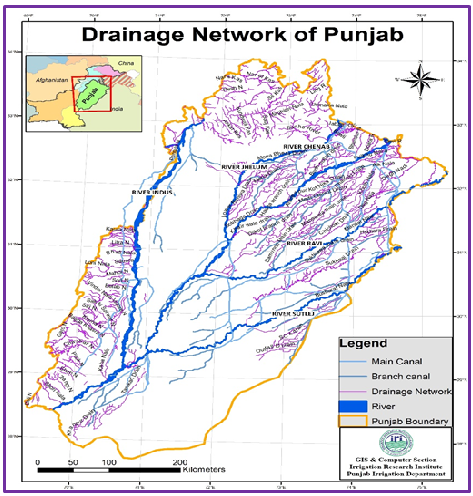
. Excessive use of fertilizers and pesticides:
Food and fiber are the basic needs for the mankind on the planet and food security in Indus Valley is primarily linked with water security (Akhtar, 2017; Qureshi & Ashraf, 2019). Tremendously increasing rate of population in Pakistan -2.4% annual growth rate- is the highest in South Asian region and population is projected to cross 300 M by 2050. This increase in population is putting more pressure on water resources and per capita water availability (Falkenmark water stress Index) has fallen down to 861 and 770 m3/capita/year for Pakistan and Punjab province respectively (GoPb_PID, 2018). Increasing demands of food and fiber has resulted in extensive use of fertilizers, pesticides, insecticides, herbicides and other chemicals to increase the agricultural production (Figure 2), which ultimately either leach into the groundwater or flow into surface drains and ultimately into the rivers (Vlotman, 2017; Zakir-Hassan et al., 2017). The Irrigation Research Institute (IRI) conducted a field survey and installed sixty exploratory boreholes in the field at various critical sites in Punjab to monitor groundwater quality and soil stratification to observe the impact of surface drains and other potential threats to groundwater. Wherein it was observed that surface water bodies especially drains carrying waste waters are playing a vital role in contamination of groundwater. Plastics pollution, vegetation growth, and silting of drains are the major threats impeding the flow of water in drains, which increase the retention period of effluents in drains resulting in land and groundwater degradation (Qaiser, 2018). Most of pollutants are drained by artificial drainage along with the most productive agricultural soil particles; at the same time artificial drainage is considered worldwide a major threat/polluter for water resources (Matinzadeh et al., 2017). Several international studies have shown that agri-chemicals and pathogens have been found in groundwater (Madani, 2017). Effluents produced by extensive irrigation is a major cause of land and water salinization (Konukcu et al 2006). Similarly, (Matinzadeh et al 2017) found that improper design of drainage systems may cause accumulation of pollutants in the environment. According to (Ragab, 2017) modern technologies for estimating the crop water requirements can help in answering “how much to irrigate?” which will reduce the drainage volume and consequently the problem of waterlogging and salinity. “The less water is mobilized thorough our agricultural lands, the better the quality of water will remain”(Vlotman, 2017). Water waters being generated from our houses, industries and agricutural fields are cntaminated, contain hazardous material and cause laand and water degradation (Arshad & Shakoor, 2017; Azhar et al., 2010; WB, 1994). Use of contaminated groundwater has adversve impacts on human heakth in all cases drinking, irrigation of food crops and vetetable, drinking by animal; as contaminatnst have been traced in food-chaim like vegetables, millk and meat (Iqbal et al., 2021).
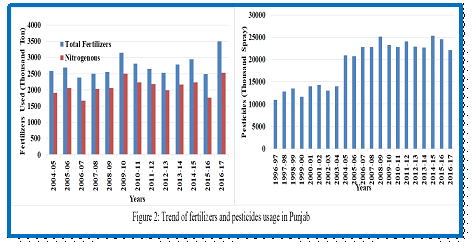
1.2. Drainage issues in Urban Areas:
In urban localities, inefficient sewerage system and lack of wastewater treatment plants has resulted in the discharge of domestic and industrial effluents directly into the drainage system and transported to surface water bodies (Mark et al., 2008; WASA, 2021; Zakir-Hassan, Butt, et al., 2021). Consequently, the drainage system becomes the main source of pollution to rivers and the groundwater system (Haq et al., 2021). The consequence of diminishing supplies of good quality irrigation water has forced farmers to use drainage water for irrigation (Baig et al., 2011; Kanwal et al., 2015). More than 200 million people in the world are using different forms of wastewater (treated, partially treated, untreated) for irrigation purposes (Raschid-Sally and Jayakody, 2009). According to another estimate, 10% of the world’s food production is based on wastewater irrigation (Corcoran, 2010). A survey conducted by International Water Management Institute (IWMI) indicated that in Pakistan large areas are directly irrigated with wastewater; especially vegetables in the vicinity of urban areas are being produced from wastewater which are threat for human heath (Gull-E-Rana et al., 2011). The mobilization of heavy metals in soil through ground water and surface water is known to have potential toxic impact on environmental quality and human health as well (Iqbal et al, 2016). Moreover, the presence of heavy metals in soil and water beyond permissible limits may render soil non- productive and may cause bioaccumulation of heavy metals in human beings (Singh et al., 2006). It may lead to a significant accumulation of heavy metals, thus impacting food quality and safety through entry in the food chain via plants and aquatic life (Muchuweti et al. 2006). Discharge of untreated wastewater are deteriorating groundwater quality in the aquifer, increasing the risk to fresh groundwater, which is adversely impacting livelihoods of groundwater users (Hassan et al, 2014).
2.Material and Methods:
2.1. Description of Study Area:
Lahore city is the hub of industrial activities. The major source of water supply in Lahore for domestic and industrial uses is groundwater. Due to increasing demand for water in urban areas for domestic use and industry, pressure on groundwater resources has increased manifold (Akhtar & Tang, 2013b). The city is situated on the Left bank of Ravi River. Flows in the river have decreased continuously since 1960 after Indus Water Treat between India and Pakistan (WB, 1962). Several drains carrying domestic, agricultural and industrial effluents are entering the river without treatment (Figure 3), due to which quality of groundwater is deteriorating over the time (Gull-E-Rana et al., 2011; Nisa, 2018). A reach of about 60 km of the river has been selected to investigate the impact of various effluents in drains and river on groundwater. A map of the study area along with location of three experimental sites is shown in Figure 4. Population growth has a direct impact on depletion of groundwater resources. Abstraction of groundwater increases as population grows and over-exploitation of aquifer and results in decline of groundwater levels (Irshad, 2018; Nisa, 2018). This situation has resulted in about 1-meter decline in groundwater table annually (Hassan et al 2016). An important aspect of the research study is to develop a link between quality of surface water bodies (Ravi River & drains) and its impacts on groundwater quality in the underlying aquifer (Akhtar & Tang, 2013a). Ravi River is being polluted due to indiscriminate discharge of untreated municipal wastewater and industrial effluent(Ali et al., 2009) . Lahore city falls in sub-tropical and semi-arid region having an annual average rainfall of 575mm with a range of 300-1200 mm. Rainfall contributes significantly towards the recharge to the aquifer underlying the city (Mahmood et al., 2013). Rainfall quality in Lahore city has been found suitable, but when it reaches the surface of roads and streets it is polluted and mixed with other waste waters (IRI, 2019). This situation leads to urban flooding during the monsoon months (Zakir-Hassan, Butt, et al., 2021). Low flows in Ravi River have resulted in lowering the groundwater level in Lahore and adjoining areas (WWF, 2019). On one side, recharge to the aquifer has decreased tremendously and on the other side the river ecosystem has suffered - the river has become a “sludge carrier” (PWOP, 2013). Pollution in surface water bodies is affecting groundwater quality in the underlying aquifer in Lahore city (Hassan et al., 2014). (Hassan et al, 2013) recommended a minimum flow regime be maintained in the Ravi to meet the requirements of dilution of pollutants and to treat the wastewater before disposal into the river.
Water and Sanitation Agency (WASA), Lahore has installed 480 tubewells of different capacities at a depth ranging from 150 to 200 m for supplying water to the citizens of Lahore which are extracting about 33.1 m3/sec (cumec) of groundwater per day for drinking purpose (WASA, 2021). In addition to WASA tubewells, many private tubewells installed in housing schemes are pumping about 2.83 cumec water daily. Water is also being pumped by industries at the rate of approximately 10.63 cumec (Hussain & Sultan, 2013). In this way total extraction of groundwater in Lahore becomes 46.61 cumec. Over exploitation of groundwater causes many serious environmental concerns e.g., brackish water intrusion, increase in pumping cost, increase in installation cost of tubewells, land subsidence, land sliding, development of sinkholes etc. Urban population in the Lahore is increasing at an alarming rate of 4% per year which is leading to a continuous increase in domestic sewage (Irshad, 2018). This sewage coupled with street runoff is a severe threat to groundwater as a part of it ultimately leaches down to groundwater through earthen drainage network in the city. It was estimated that discharge of wastewater of Lahore city into Ravi River was about 28 cumec in year 2006 (Saeed and Bahzad, 2006) and now has increased to 94 cumec through drains and various pumping stations without proper treatment (Hussain & Sultan, 2013). A survey of drains entering the River has been carried out which has revealed that six main drains are entering the River which are discharging untreated effluents into the River as shown in Figure 3 (Hassan et al. 2016).
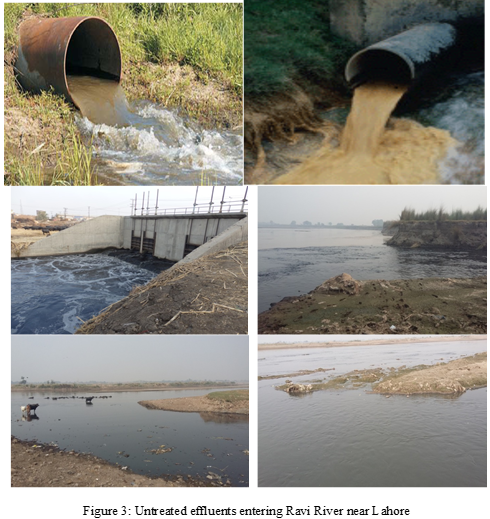
Figure 4 : Map of study area showing three experimental sites along the Ravi River (Ravi Syphon, Shahdra and Mohlanwal) locations of drains in the city
2.2. Experimental layout of piezometers for monitoring:
Three sites along Ravi River viz: Ravi Syphon (upstream of the city), Shahdra Bridge (in the city) and Mohlanwal (downstream of the city) has been selected for installation of piezometers keeping in view the different factors including but not limited to distance from the River, availability of benchmark, safety of the piezometers, site approach, willingness of farmers and protection of piezometers from flooding by rainfall and irrigation water etc. Fifty piezometers along the River on both sides in the shape of triangular battery of three piezometers (9 on each side of the River) at three selected locations were installed. In each battery, three piezometers were installed up to a depth of 45.7, 30.48 and 15.24 m (150, 100 and 50 ft) respectively. Schematic layout of the piezometers installed at three sites (Figure 5). Three batteries of piezometers perpendicular to the River have been installed on one side of the River at all three sites. First battery has been installed on the edge of the riverbank, 2nd battery at about 152.4 m (500 ft) away from the river edge and 3rd battery at about 305 to 457 m (1000 to 1500 ft) from the River edge (Hassan et al., 2014). A battery of three piezometers installed at the experimental suite is shown in (Figure 6). A complete network of piezometers has been installed to monitor the 4th dimensional trend of changes in groundwater levels and quality, which are along the river, away from the river, below the natural surface level (NSL), and with respect to time. Monitoring network along the River has been laid on permanent basis which is to be used for long-term observation of changes in groundwater levels and quality and impact of pollution in River on groundwater. Similarly, a network of piezometers has been installed in Lahore city to observe groundwater levels (Figure 7). Groundwater levels are being monitored twice in a year - pre and post monsoon periods. Many industries are discharging wastewater into sewerage system and surface drains without treatment (Akhtar & Tang, 2013). A survey has been conducted in the study area and schematic diagram of surface drains carrying wastewater effluents discharging into the Ravi River is shown in (Figure 8). Domestic and industrial effluents contain organic and inorganic pollutants which, over the time, percolate to groundwater. Flow in Ravi River especially during the winter is remarkably insufficient to dilute wastewater pollution (Irshad, 2018; Kanwal et al., 2015). The environmental profile of Pakistan indicates that about 40% of deaths are related to waterborne diseases spread by water pollution, mainly due to the sewage and industrial wastewater contamination to drinking water distribution systems (Hassan, Hassan, & Akhtar, 2014).
Major objective of this study is to monitor and evaluate the impact of pollution in Ravi River -due to waste waters coming from surface drains to river. For this purpose, a network of piezometers has been installed along the River. Samples of water from drainage water, surface water (river) and groundwater (from piezometers) have been collected and analyzed to arrive at conclusions. Results of analysis of data are discussed in the following sections.
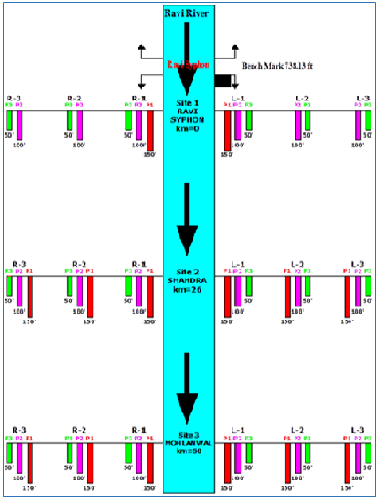
Figure 5: Schematic layout of experimental layout along the Ravi River
Notes i) L indicates left side and 1,2,3, represent site 1, 2 and 3 respectively; Similarly, R is for right side)
ii) P1 = 150 ft deep, P2 = 100 ft deep and P3 = 50 ft deep- at all three sites, and 3 batteries on each side of the river
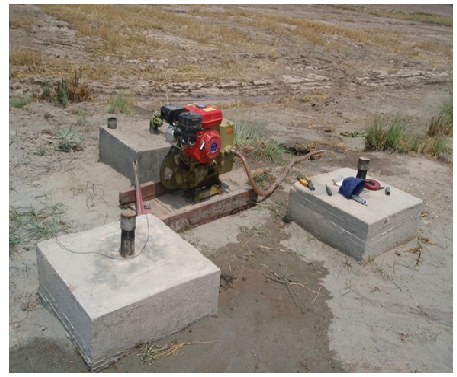
Figure 6: Battery of three piezometers along Ravi River at 50, 100 and 150 ft depths at Mohlanwal
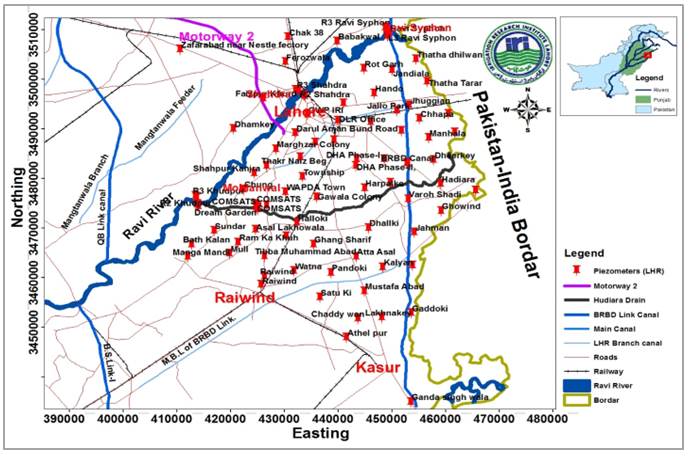
Figure 7: Network of piezometers installed in Lahore city for groundwater investigations

Figure 8: Schematic layout of major drains with discharges entering the Ravi River.
3.Results and Discussion:
3.1. Quality of Drainage effluents:
Water samples from drains were collected and analyzed. Effluents of these drains are deteriorating the quality of groundwater along the River. Higher Ec (2440 µs/cm) from Farrukhabad Drain has been observed during 2012 that is adding pollution load into the River. The results represented indicate that pollution load in drains are increasing with time and enhancing pollution in the river and groundwater. A network of surface drains in Lahore city carries wastewater from various sources and ultimately enters the Ravi River. These are earthen channels which cause the leaching of various pollutants directly to groundwater (Hassan et al, 2013). Similar findings have been concluded by previous studies as well (Gull-E-Rana et al., 2011; Khattak et al., 2012; Nisa, 2018). Municipal Solid Waste (MSW) consists of household waste, commercial waste and institutional waste. Unregulated disposal of solid waste poses serious environmental threat to groundwater. Leachate produced at landfill contains thousands of complex components and it becomes part of groundwater after leaching down through infiltration. In Lahore city, three sites have been selected for dumping of solid waste. Groundwater is suspected to be contaminated due to, unsafe, unplanned and traditional selection of these sites. At least three-quarters of the total waste generated (3800 tons/day) in Lahore is dumped at these sites without proper treatment. It was found that most groundwater samples collected from near these landfill sites contain pollutants and their concentration level in groundwater is higher than prescribed by Pakistan Standards and Quality Control Authority (PSQCA) and concentration of Arsenic in drinking water is higher than WHO criteria. Such results were previously found by (Akhtar & Zhonghua, 2013). According to United Nations Environmental Program (UNEP)’s data, about 47% drinking water in Lahore city was contaminated due to presence of various hazardous toxic elements (Manan, 2008). Comparison of chemical analysis of drain-water samples in 2016 and 2011 is tabulated in Table 2, which indicates that there is about 3-10 % increase in Ec values of drainage effluents in different drains in the city. This is an evidence that pollution load in the waste waters is increasing with time and therefore quality of groundwater is being impacted adversely (Zakir-Hassan et al., 2016)
3.2. Groundwater Quality:
Groundwater quality at downstream from Ravi Syphon to Lahore city has deteriorated. It has been observed that the color of groundwater near Lahore city has varied from colorless to yellowish and its odor is now objectionable with turbidity ranging from 2 to 4 NTU. Heavy metals have also been found in the groundwater samples and the concentration of lead (Pb), Nickel (Ni) and number of E. coli levels exceeded the permissible limits of drinking water quality (Ayesha, 2011; Zakir-Hassan et al., 2017). Municipal landfills are considered other sources which have a serious threat to urban environments and a great source of pollution especially groundwater (Akhtar and Zhonghua, 2014). To develop the link between wastewater in river and groundwater in the underlying aquifer, water samples from all 50 piezometers installed along the river, away from the river and at different depth were taken through a specially designed sampler. Electrical Conductivity (Ec) of groundwater at all sites has been selected as an attribute to compare the results/finding of present study. The results are graphically plotted in Figures 9a-f.
Results indicate that groundwater quality at Ravi Syphon on both sides of the River at all depths (P1=15.24 m, P2= 30.5 m, and P3=45.7 m) is fit and is not deteriorating with time. This indicates that groundwater quality perpendicular to the river from Left side (L1, L2, L3) or right side (R1, R2, R3) is good and can be used as benchmark for comparison of groundwater quality at downstream locations while moving along the River towards the city and then downstream to city. The data analysis at Shahdra site (near the city) reveals that Ec values at 15.24 m. depth are higher while the value at 45.7 m depth is lesser on both sides of the River which indicate groundwater quality improves vertically downward predicting that shallow groundwater is more polluted. At Mohlanwal site, Ec values of piezometer installed at 15.24 m depth are higher as compared to those at 30.5 m and 45.7 m depth on left side while lesser on right side of the river. Results indicate that quality of groundwater at 15.24 m depth is deteriorating with time at Shahdra site. Overall results of analysis of groundwater samples along Ravi River indicate that the quality of water is deteriorating, moving downstream from Ravi Syphon to Lahore. Result of analysis indicates that groundwater quality is deteriorating more at Shahdra (as compared to that of Ravi Syphon and Mohlanwal) due to discharge of effluents through different drains into the river. The data at Shahdra site along both sides of the river indicate that quality of shallow water at depth of 15.24 m at R3 and L3 is deteriorating more with the passage of time. In concluding remarks, it is established that pollutants in drainage effluents being disposed into the River, are contaminating the groundwater in the underlying aquifer. In another study by (IRI 2013) it has been observed that groundwater levels in piezometers fluctuate with the changes in river gauge indicating that aquifer is hydraulically connected with river. Another evidence in this regard is the flood water contributes significantly towards recharging the aquifer and diluting pollutants and improving the groundwater quality. For example, during the 2014 flood the average rise in watertable observed in Rechna doab was 0.78 m (IRI, 2015).
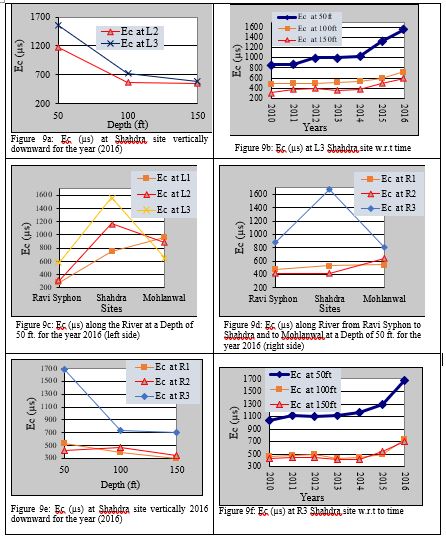
Figure 9: Trends of impacts of impacts of drainage effluents on groundwater quality
4. Conclusions:
This research has found: i) pollution entering the Ravi River is ultimately affecting adversely the quality of underlying groundwater and the River has become a source of pollution for the groundwater reservoir due to low flows and disposal of untreated effluents in the river; ii) There is a rise of about 3-10% in Ec value of groundwater over a period of 5 years. iii) quality of drainage water entering the river is deteriorating with the passage of time and consequently similar trends have been observed in river water quality. iv) Groundwater quality in the aquifer is deteriorating and fresh water is becoming rare and out of reach and quality improves with the depth below land surface. v) Groundwater quality deteriorates moving downward from Ravi Syphon to Mohlanwal and is worst near Shahdra (near the city), which indicates the drainage effluents being thrown into the River, are contaminating the aquifer. vi) Ravi River is contributing towards recharging the aquifer as groundwater levels fluctuate with the river gauge. vii) Quality of effluents in drains entering the River is deteriorating with the passage of time and changes during the year. viii) There is a need for better communication/coordination among different Government Departments/ agencies and the various stakeholders/consumers
5. Recommendations:
i) Production of all pollutants should be reduced or minimized at source and wastewater must be treated before disposal into the river. ii) Education, awareness and motivation campaigns for all stakeholders through electronic, print and social media can play a vital role in protection and sustainable use of groundwater. iii) Formulation and strict implementation of long-term holistic policy-framework and regulatory framework is required. iv) Comprehensive master planning of the city is the urgent need to safe-guard fast polluting groundwater. v) Monitoring of groundwater levels, quality, discharge of drainage effluents, drainage water quality needs to be strengthened/modernized for proper planning and protection of water resources in the city. vi) Promoting and financing the schemes of rainfall harvesting and managed aquifer recharge (MAR) utilizing rainfall and flood water. vii) Lessen the pressure on groundwater by making more surface-water available, institutionalizing the efficient use of water, recycling water where feasible, limiting the groundwater use only for drinking purpose. viii) introduction of perforated streets and road-shoulders to increase the natural recharge. ix) To maintain minimum flow in Ravi River for dilution of pollutants and enable it to act as source of recharge. x) Proper dumping of solid-waste and initialization of waste to energy concept through public-private partnership. xi) Training, capacity building, and water education/awareness for all stakeholders are imperative.
6. Acknowledgements:
This research has been carried out under a project funded by the Punjab Government of Pakistan. Cooperation extended by different provincial, federal institutions/departments for provision of necessary data is acknowledged.
Notes: i) The views expressed in the paper are of individual authors and do not represent the views of any organization/department. ii) The authors declare no conflict of interest. iii) An earlier version of this paper was presented at 13th International Drainage Workshop of ICID held on 4-7 March 2017 at Ahwaz, Iran.
Table 1: Salient features of SCARPs

Table 2: Quality of Drainage Water entering the Ravi River
